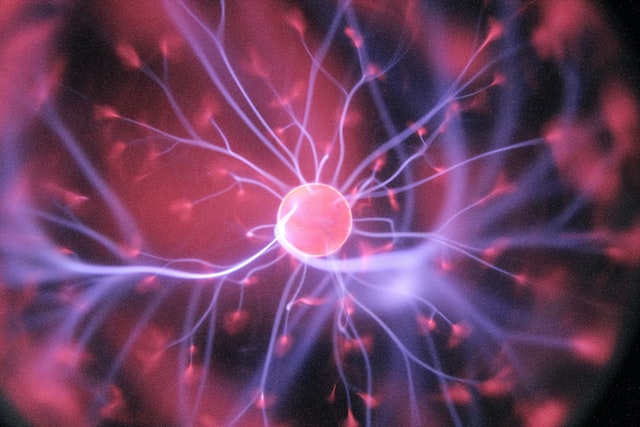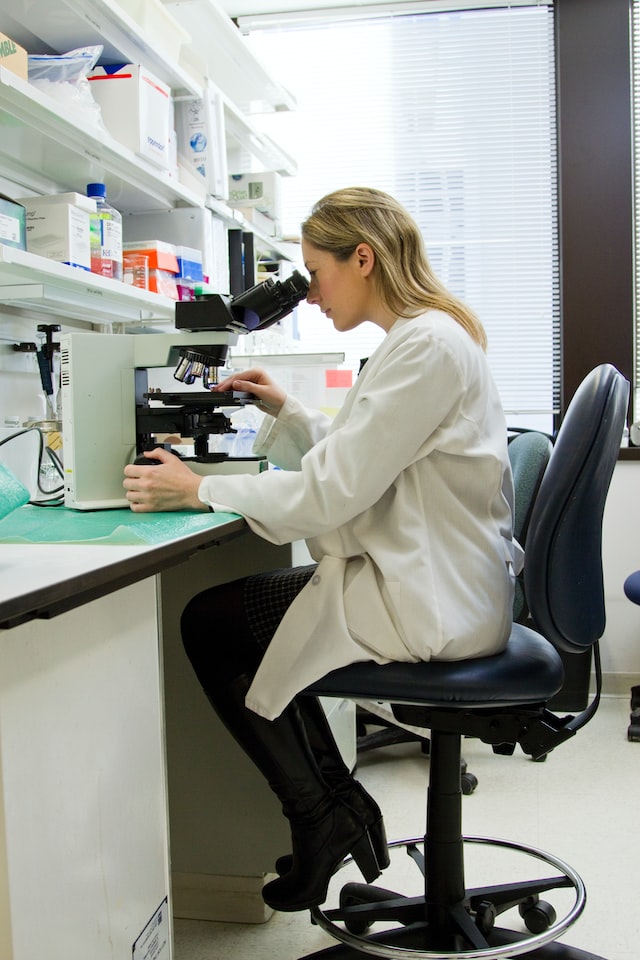Recent studies have shown that in humans and rodents, obesity is indeed associated with damage to areas of the brain that are responsible for weight control. Chronic high fructose diets not only lead to hypertension, diabetes and hyperlipidemia, but may also directly cause changes in insulin metabolism, resulting in brain damage. However, no definitive information has been found on whether increased fibroblast growth factor alone can cause endothelial damage or even atherosclerosis. There is no equivalence between the rise in fibroblast factor and brain damage caused by prolonged satiety.

Anyone who is keen to lose weight must have heard of the "eat less, eat more" diet, right? Similarly, there is the "eat only seven portions, full meals hurt the brain" rule. You've heard of the "eat less, eat more" rule.
Eating less and more is acceptable, but eating full hurts the brain.
Prolonged satiety can cause an increase in fibroblast growth factors in the brain, which can lead to hardening of blood vessels. This reduces the amount of oxygen and nutrients available to the brain, which can lead to brain tissue atrophy and functional degeneration.
Science requires not only correct conclusions but also a rigorous argumentative process, and we might analyse this argument.
The passage contains three broad layers of meaning.
1, Prolonged satiety leads to huge increases in fibroblast growth factor

2, Fibroblast growth factor causes proliferation of capillary endothelial cells and adipocytes, leading to vascular sclerosis.
3,Vascular sclerosis leads to atrophy and functional degeneration of brain tissue.
What is Fibroblast Growth Factor?
Fibroblast growth factor (FGF) is a group of peptides with a wide range of biological activities and can be divided into various subtypes depending on their physicochemical properties (isoelectric point). This was named fibroblast growth factor. It was subsequently shown that BFGF is found mainly in vascular-rich tissues such as the brain, pituitary, hypothalamus, retina, adrenal glands, placenta and ovaries. BFGF can also be extracted from various tumour tissue homogenates. Acidic FGF is only found in the brain, hypothalamus and retina.

Studies have shown that fibroblast growth factor is synthesised by endothelial cells and then bound and stored in the basement membrane, and that vascular endothelial cells are the synthesis cells of fibroblast growth factor as well as its effector cells. The proliferation and differentiation of endothelial cells and their morphological and functional changes are closely related to fibroblast growth factor.
Their biological activity is divided into two main types.
(1) Mitogenic activity, which promotes tissue cell division and proliferation, including embryonic development, morphogenesis, angiogenesis and tissue damage repair.
(2) Non-mitotic activities, including vasodilatory, cardioprotective, local ischaemic protection and neuroprotection. This makes it a hot topic of research in vascular regeneration, ulcer healing, wound repair and even cancer.

Let's examine each of these three layers in turn.
Does prolonged satiety lead to an increase in fibroblast growth factor?
Earlier studies have shown that an increase in fibroblast growth factor does occur with satiety. Recent studies have shown that FGF21 (a type of fibroblast growth factor) appears to be involved in the regulation of body fat. The researchers found that in rats FGF21 inhibited hepatic glucose production, promoted hepatic gluconeogenesis and reduced glucagon, while in rodent models of obesity FGF21 was significantly increased and was not affected by exogenous FGF21. This suggests that obesity may be a state of resistance to FGF21.
FGF21 gene expression is regulated by hunger and feeding signals, meaning that human FGF21 is increased in both starved and satiated states of the body. Increased serum levels of FGF21 occur in obese adults and children, suggesting a correlation with the body's obesity index. The normal reference range varies from study to study, for example, a mean value of 468 pg/mL in a cohort of 50 healthy individuals to a mean value of 225 pg/mL in a cohort study of a community group, and an increase in FGF21 levels in healthy individuals was found only after 7 d of fasting.

Does fibroblast growth factor cause vascular sclerosis?
The first report of "Fibroblast Growth Factor increase caused by satiety leading to brain damage" was published in the Japanese Medical Journal in 198901 under the title "Overeating promotes cerebral atherosclerosis". The article cited research by Professor Yu Omura of Kyushu University, who said that the peptide particularly proliferated endothelial cells such as smooth muscle and capillaries that form blood vessels. Therefore, according to Prof. Omura, "if you eat too much, the peptide is secreted in large quantities in the brain and the cells that form blood vessels proliferate, resulting in cerebral arteriosclerosis".
However, a search of Professor Omura's papers, such as "The Physiological Role of Acidic Fibroblast Growth Factor", did not reveal anything directly related to this.
Because basic fibroblast growth factor promotes the division of vascular smooth muscle cells (SMCs), researchers believe that this factor may be involved in the development of atherosclerosis, but the exact role is questionable.
In the case of atherosclerosis, most scholars support the "endothelial damage response theory", which suggests that various major risk factors, such as age, hypertension and smoking, ultimately damage the arterial lining, and that the formation of sclerotic lesions is the result of an inflammatory-fibroproliferative response of the artery to endothelial and intimal damage. When endothelial damage occurs, fibroblast growth factor has a positive effect on atherosclerosis.
But does a rise in fibroblast growth factor lead directly to endothelial injury? In other words, can fibroblast growth factor be an independent cause of atherosclerosis?
Some investigators (Lindn et al.) have shown that systemic administration of basic fibroblast growth factor after intimal injury increased smooth muscle cell division and thickened the intima, whereas there was no response of smooth muscle cells when basic fibroblast growth factor was administered in the absence of intimal injury. They suggest that the arterial vessel wall synthesizes BFGF, which is a potent pro-disintegrator for smooth muscle cells, and that any factor that causes the release of endogenous BFGF stimulates smooth muscle cell proliferation and causes intimal injury to develop.
Other researchers have suggested that BFGF has positive implications for the repair of endothelial injury. In cerebral ischaemic injury, enhanced expression of BFGF is positively correlated with an increase in the number of cerebral capillaries. The reduced cholesterol content and atheromatous plaque in the arterial wall of atherosclerotic brains after BFGF treatment suggest that BFGF may have a protective effect on the endothelium of the arteries and delay atherosclerosis.
The results of the experiments in rats showed that after 6 weeks of high-fat diet, the blood lipids in rats increased and the antioxidant capacity of brain tissues decreased, indicating that the atherosclerotic lesions caused by hyperlipidemia aggravated brain tissue damage. The decrease in blood lipid level and the increase in antioxidant capacity after treatment with basic fibroblast growth factor suggest that basic fibroblast growth factor may delay or prevent the onset and development of cerebral atherosclerotic lesions by regulating blood lipids, thus reducing brain tissue damage.

Atherosclerosis leading to brain tissue atrophy and functional degeneration?
Atherosclerosis at the cranial level often affects the internal carotid artery, the basilar artery and the vertebral artery, with the internal carotid artery entering the brain being the favoured area and the lesions concentrated at the bifurcation of the vessels. Atherosclerosis causes narrowing of the blood vessels, inadequate blood supply to the brain or localised thrombosis or rupture of the plaque, which can lead to cerebrovascular accidents such as cerebral embolism; when chronic cerebral ischaemia causes brain atrophy, vascular dementia can develop.
Research on fibroblast growth factor and its applications are mainly focused on nerve repair, repair of the five senses, healing of bone repair wounds and tissue repair, application of post-operative wound healing of hemorrhoids and repair of organs. Fibroblast growth factor is also used as a raw material for high grade cosmetics, mainly to improve microcirculation and restore elasticity for anti-ageing and cosmetic purposes. It is now generally accepted that the application of growth factors to promote surface wound repair is safe. After more than 3,000 cases of controlled clinical use in large samples at home and abroad, there have been no reports of superficial or visceral complications associated with the use of growth factors, with the earliest use of basic fibroblast growth factor in the treatment of superficial trauma patients being several years old.
The majority of opinion now is that FGF has a beneficial effect on vascular sclerosis after endothelial injury has occurred, but that it also has a positive effect on the repair of endothelial injury.

However, no definitive information has been found as to whether an increase in FGF alone can cause endothelial damage or even lead to atherosclerosis.
Therefore, there is no equivalence between the rise in fibroblast factor caused by prolonged satiety and brain damage. For the media, the first principle should be to be truthful and to label the original source or mention the research topic in their reports.
